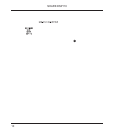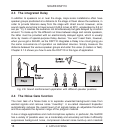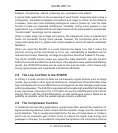
18
SHARK DSP110
2.3 The integrated Delay
In addition to speakers on or near the stage, major-scale installations often have
speaker groups positioned at a distance to the stage or flown above the audience, in
order to provide listeners away from the stage with direct sound. However, since
sound needs some time to travel around (343.6 m/sec at 20°C, accelerates by 0.6 m/
sec per °C), it reaches the audience not simultaneously but gets delayed by a certain
amount. To make up for the different run times between stage and remote speakers,
the latter must be provided with an electronically delayed signal, which is usually
done by means of special-purpose Delay devices. You wont need them, however,
when youve got a SHARK, as the DSP110 integrates a Delay Line circuit giving you
the same convenience of operation as dedicated devices. Simply measure the
distance between the various speaker groups and enter this value (in meters or feet).
Chapter 2.1.3 shows you how to wire the DSP110 in this type of application.
Fig. 2.6: Sound reinforcement application with different speaker positions
2.4 The Noise Gate function
The main task of a Noise Gate is to separate unwanted background noise from
wanted signals and remove noise inaudibly. A so-called downward Expander
automatically reduces the overall level of all signals below an adjustable threshold
and thus expands the dynamic range of the program material.
In live or stage applications and multi-microphone systems, in particular, the SHARK
has a variety of possible uses: as a moderately and accurately set Gate it efficiently
suppresses background noise, compressor-induced noise build-up and crosstalk
2. APPLICATIONS


















